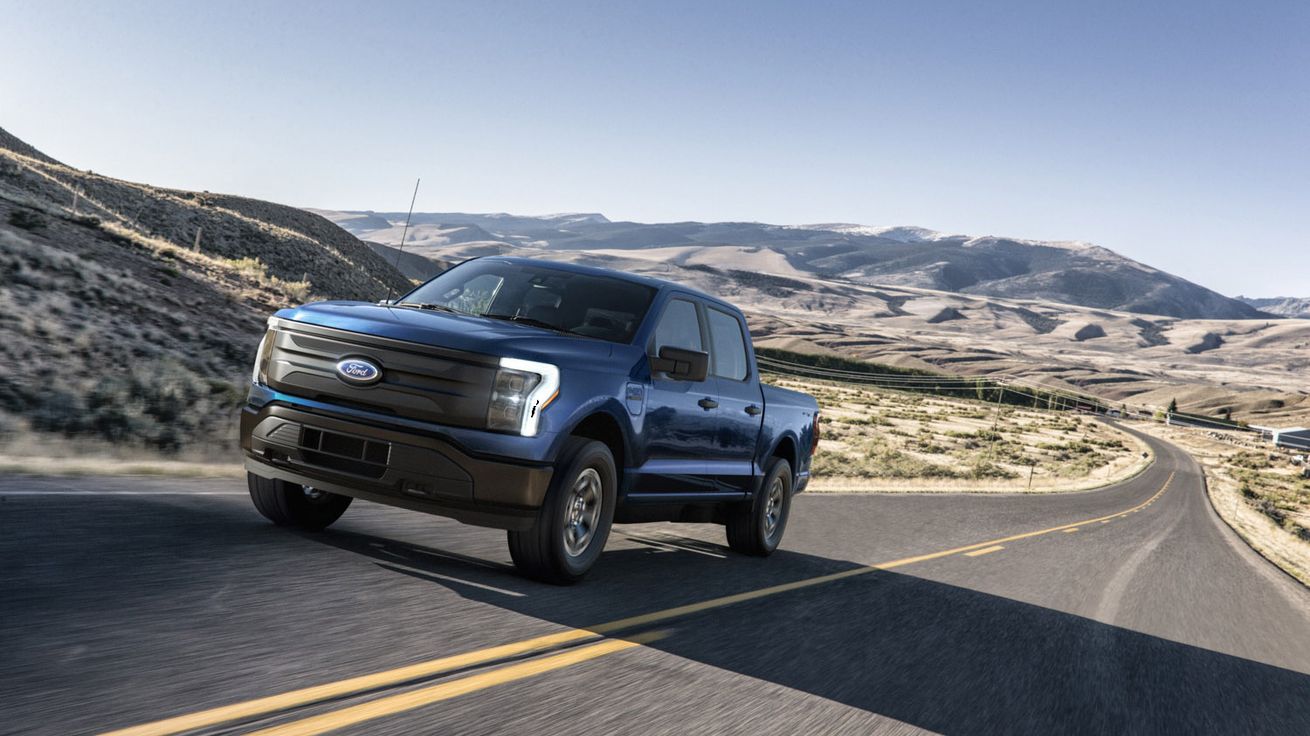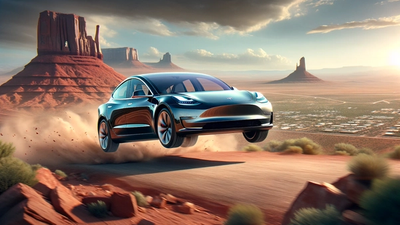Article updated: January 1, 2024
The debut in 2021 of the all-electric version of America’s most popular pickup truck, the Ford F-150 Lightning, marked a major shift in the truck landscape. The Lightning has been an instant favorite of truck enthusiasts, selling out on its initial reservation in only 60 days. Since then, Ford has continued to introduce improvements to its popular all-electric truck, even winning MotorTrend’s Truck of the Year in 2023.
Notably, the Ford F-150 Lightning held onto its $7500 federal EV tax credit on January 24, 2024. According to 2024 tax credit updates, the $7500 EV tax credit is also now available to eligible buyers as a discount at checkout at IRS-registered Ford dealerships.
This article will explore what makes the F-150 Lightning such an impressive addition to Ford’s growing EV lineup, as well as compare the six different trims available. We’ll also take a look at the best way to save money when financing your Lightning purchase through an EV Climate Loan with EV Life.
Ford F-150 Lightning Specs, Design, and Safety Features
Exterior
Visually, the Ford F-150 Lightning is virtually indistinguishable from its gas-powered counterpart, with a few unique elements. It has the same classic design and rugged looks, sporting a high-strength steel frame and a spacious 5.5-foot bed, a grill-less front end, and R-shaped head and tail lights.
Interior
The interior of the Lightning, which is only offered as a five-passenger crew cab, is also similar to the standard F-150, but with a few small differences. A large touchscreen infotainment system with Ford's latest Sync 4 software comes standard, along with, in-dash navigation, Apple CarPlay, Android Auto, and a Wi-Fi hotspot. The Lightning also provides exceptional storage, offering 14.1 cubic feet of “frunk” (front trunk) space capable of carrying up to 400 lbs of cargo.
Safety Features
The F-150 Lightning boasts a variety of standard driver assistance and other state-of-the-art safety features, including:
- Standard automated emergency braking with pedestrian detection
- Standard lane-departure warning with lane-keeping assist
- Available adaptive cruise control with hands-free driving mode
- Curve control
- Tire Pressure Monitoring System
- AdvanceTrac with Roll Stability Control (RSC)
Battery and Trim Options
Every F-150 Lighting model uses a dual-motor powertrain to enable electric all-wheel-drive and exhibits the trademark EV acceleration, reaching 0-60 in about four seconds. Two battery options are available, with the standard range holding 98 kWh of usable capacity and the extended range pack capable of 131 kWh.
Standard batteries have an EPA-estimated range of 240 miles and 452 horsepower, while the optional extended-range battery will increase the range to 320 miles and bump the power up to 580 horsepower. The Lightning comes in five trim levels: Pro, XLT, XLT High, Lariat, and Platinum. Each trim has a variety of packages, range-extending battery options, and add-on features.
Comparing Ford F-150 Lightning Models at a Glance:
Ford F-150 Lightning Version | Price | Range | EV Tax Credit | State/Local Incentives |
|---|
F-150 Lightning Pro | $49,995 | 240 miles | $7,500 | |
F-150 Lightning XLT | $54,995 | 240 miles | $7,500 | |
F-150 Lightning Lariat | $69,995 | 240 miles | $7,500 | |
F-150 Lightning Platinum Extended Range | $91,995 | 320 miles | N/A | |
How to Save Money on Your Ford F-150 Lightning
For drivers considering the Ford F-150 Lightning, there are a variety of programs, grants, and tax credits available to encourage drivers to make the switch to electric vehicles.
Here are a few incentives available that can help you save even more on your Ford F-150 Lightning:
Federal Tax Credit. The Inflation Reduction Act of 2022 introduced a new federal EV tax credit of up to $7,500 for qualified drivers looking to purchase an EV. Electric trucks and SUVs with an MSRP of up $80,000 may qualify. Effective January 1, 2024, the $7500 EV tax credit is now available to eligible buyers as a discount at point of sale at IRS-registered Ford dealerships.
Colorado Electric Vehicle Tax Credit. The Colorado EV tax credit offers Colorado residents a tax credit of up to $5,000 toward the purchase of an electric vehicle or plug-in hybrid electric vehicle with an MSRP of up to $80,000.
California Clean Cars 4 All. The Clean Cars 4 All program helps lower-income Californians by offering incentives to retire their older gas-powered vehicles and invest in EVs.
Other state & local incentives. There is still a wide variety of state and local incentives available to eligible American drivers. Check EV Life’s Savings Calculator to see what you qualify for.
How EV Life Helps You Save Big on F-150 Lightning Financing
EV Life offers a smarter solution for your F-150 Lightning purchase. Here’s how it works when you apply for an EV Climate Loan with EV Life:
- Pre-qualify for more than financing. EV Life’s application process is easy and fast. We’ll ensure that you qualify for every tax credit, rebate, and other incentive you’re eligible for, then help you file all the paperwork with our “Turbo Tax-style” incentive filing tools.
- Bundle charging. An EV Life loan enables you to get an instant quote for home charger installation and bundle it into auto financing, reducing your upfront costs.
- One low payment. The EV Life loan applies all your savings directly to your loan, significantly reducing your monthly payment.
Don’t navigate the complex and ever-shifting EV incentive process alone. Financing with EV Life guarantees the best prices and the lowest rates on your EV, saving the planet while saving your pocketbook.
Get pre-qualified today to find out how much you could save on your F-150 Lightning.





